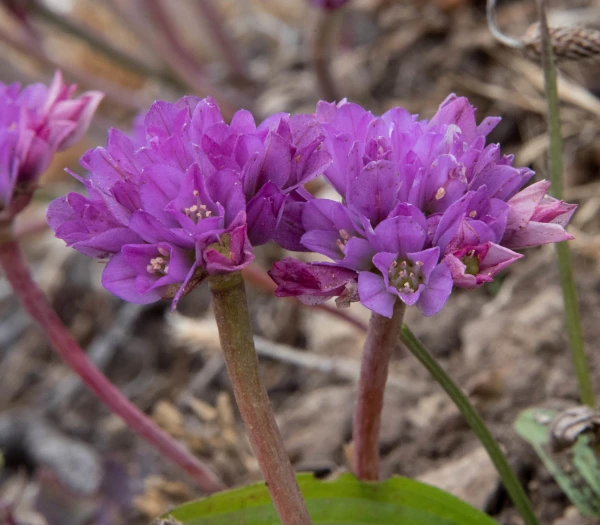Coastal Onion
(Allium dichlamydeum)
Coastal Onion (Allium dichlamydeum)
/
/

Don Loarie
CC BY 4.0
Image By:
Don Loarie
Recorded By:
Copyright:
CC BY 4.0
Copyright Notice:
Photo by: Don Loarie | License Type: CC BY 4.0 | License URL: http://creativecommons.org/licenses/by/4.0/ | Rights Holder: Don Loarie | Publisher: iNaturalist | Date Created: 2017-06-25T15:30:56-07:00 |

























Estimated Native Range
Climate Requirements for Brampton, Canada
| This Plant | Your Site | Plant Suitability for Your Location | ||
|---|---|---|---|---|
| • Precipitation | 16" - 50" | 33" | Your precipitation may be insufficient for this plant. Irrigate N" / year. | Irrigate N" / year |
| • High Temp. | 64°F - 94°F | 81°F | Your summer temperatures are normal for this plant. | Excellent |
| • Low Temp. | 23°F - 46°F | 13°F | Your winter temperatures may be too cold for this plant | Too cold |
This plant should grow well at your location with about N inches per year (Y minutes per month) of irrigation.
Summary
Allium dichlamydeum, commonly known as Coastal Onion, is a perennial herb endemic to the coastal regions of California, particularly on sea cliffs and coastal hills from Santa Barbara County to Mendocino County. It prefers rocky, well-drained soils and is adapted to the coastal scrub and chaparral ecosystems. Coastal Onion typically grows to a height of 10-40 centimeters with a stout green stem and a brown or gray bulb. Its leaves are long, narrow, and resemble those of cultivated onions. The plant produces an inflorescence of bright magenta to fuchsia flowers, which are quite showy and bloom from late spring to early summer, attracting pollinators such as bees and butterflies.
Coastal Onion is valued for its vibrant flower color and is often used in native plant gardens, rock gardens, and as a border plant in coastal areas. It is drought-tolerant once established, making it suitable for xeriscaping. This species requires minimal maintenance and is relatively free of pests and diseases. It is also known for its culinary uses, as the leaves and bulbs can be used similarly to other edible alliums. In cultivation, it performs best in full sun to part shade and requires well-drained soil. While it is not typically invasive, care should be taken to prevent the spread of seeds into natural areas outside its native range to preserve local biodiversity.CC BY-SA 4.0
Coastal Onion is valued for its vibrant flower color and is often used in native plant gardens, rock gardens, and as a border plant in coastal areas. It is drought-tolerant once established, making it suitable for xeriscaping. This species requires minimal maintenance and is relatively free of pests and diseases. It is also known for its culinary uses, as the leaves and bulbs can be used similarly to other edible alliums. In cultivation, it performs best in full sun to part shade and requires well-drained soil. While it is not typically invasive, care should be taken to prevent the spread of seeds into natural areas outside its native range to preserve local biodiversity.CC BY-SA 4.0
Plant Description
- Plant Type: Herb, Bulb
- Height: 0.5-1.5 feet
- Width: 0.5-1.5 feet
- Growth Rate: Moderate
- Flower Color: Pink, Purple, Red
- Flowering Season: Spring, Summer
- Leaf Retention: Deciduous
Growth Requirements
- Sun: Full Sun
- Water: Low
- Drainage: Fast
Common Uses
Border Plant, Deer Resistant, Drought Tolerant, Low Maintenance, Rock Garden
Natural Habitat
Coastal scrub and chaparral ecosystems
Other Names
Common Names: Gebber’s onion, Two-bract onion
Scientific Names: Allium dichlamydeum, Allium serratum var. dichlamydeum
GBIF Accepted Name: Allium dichlamydeum